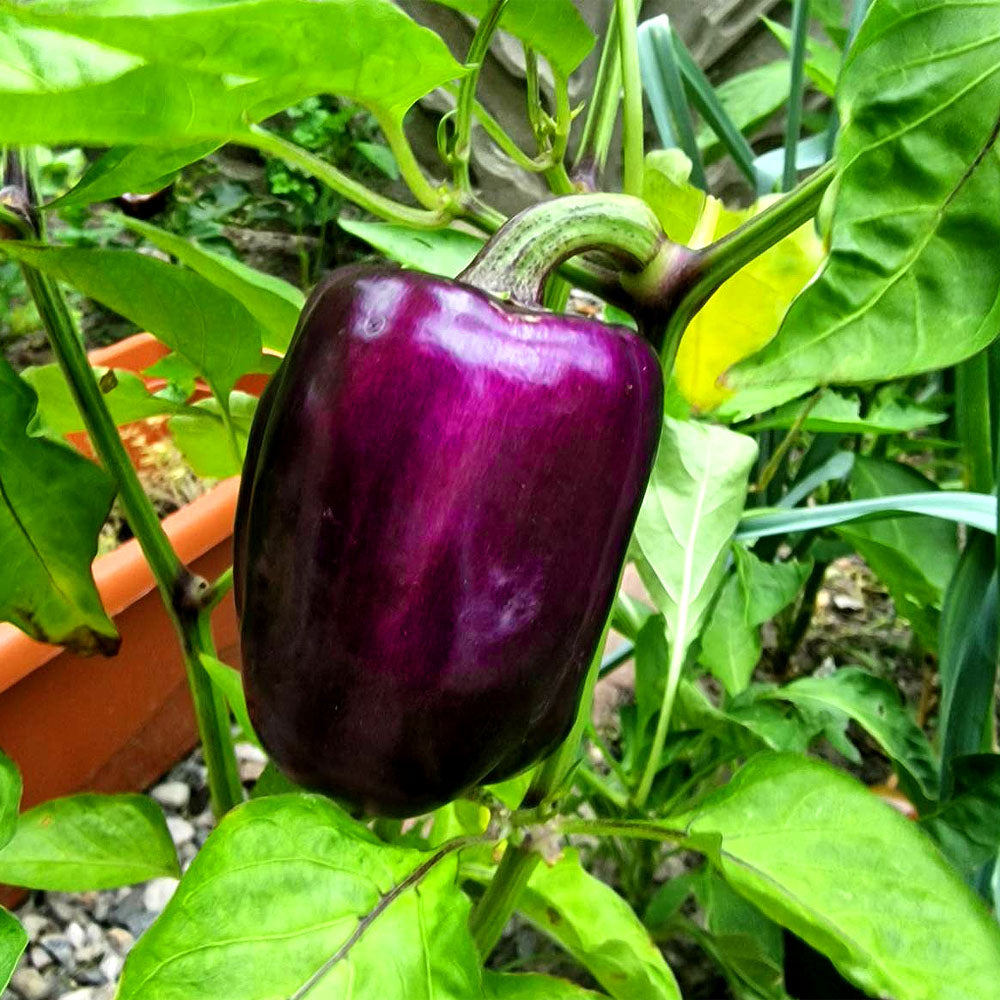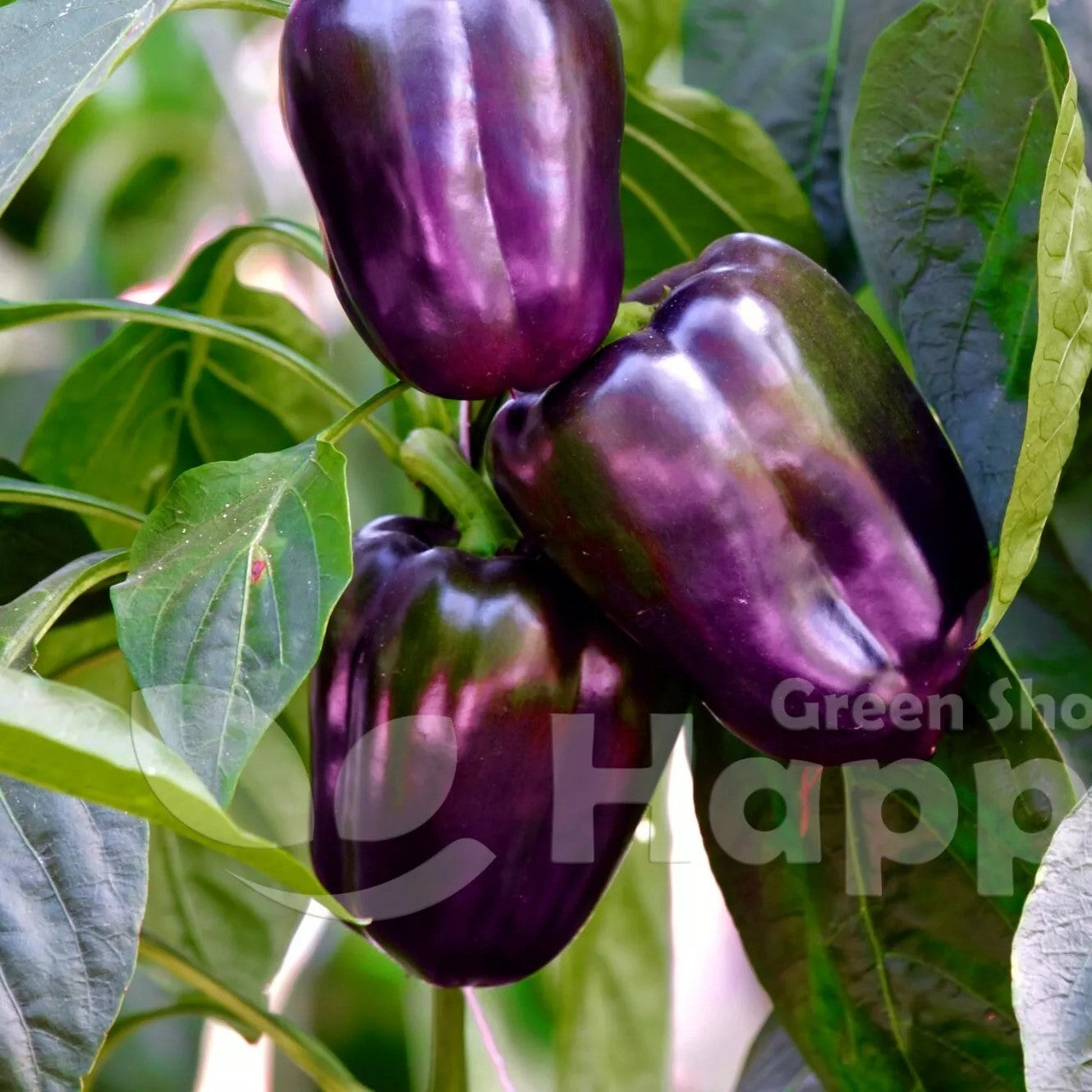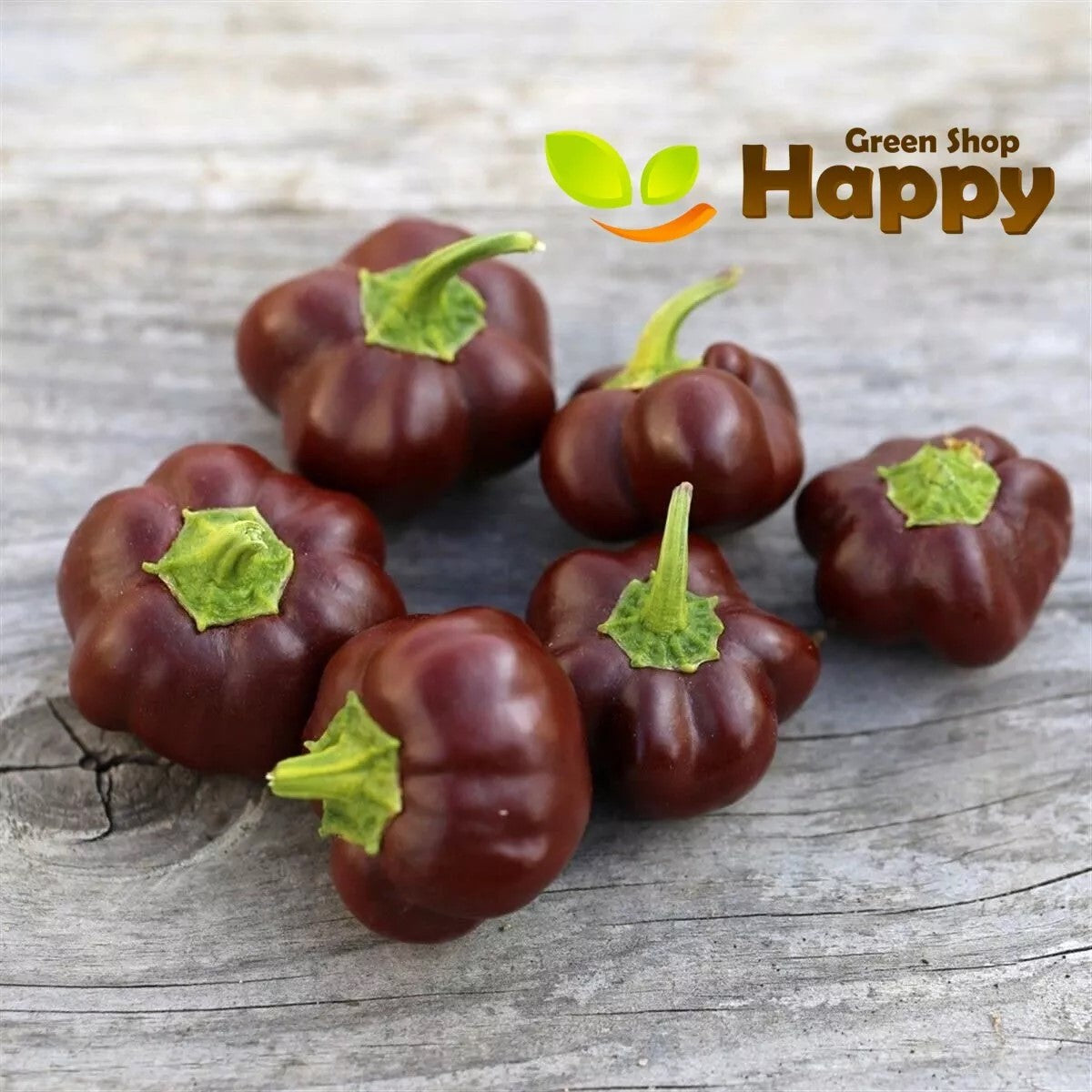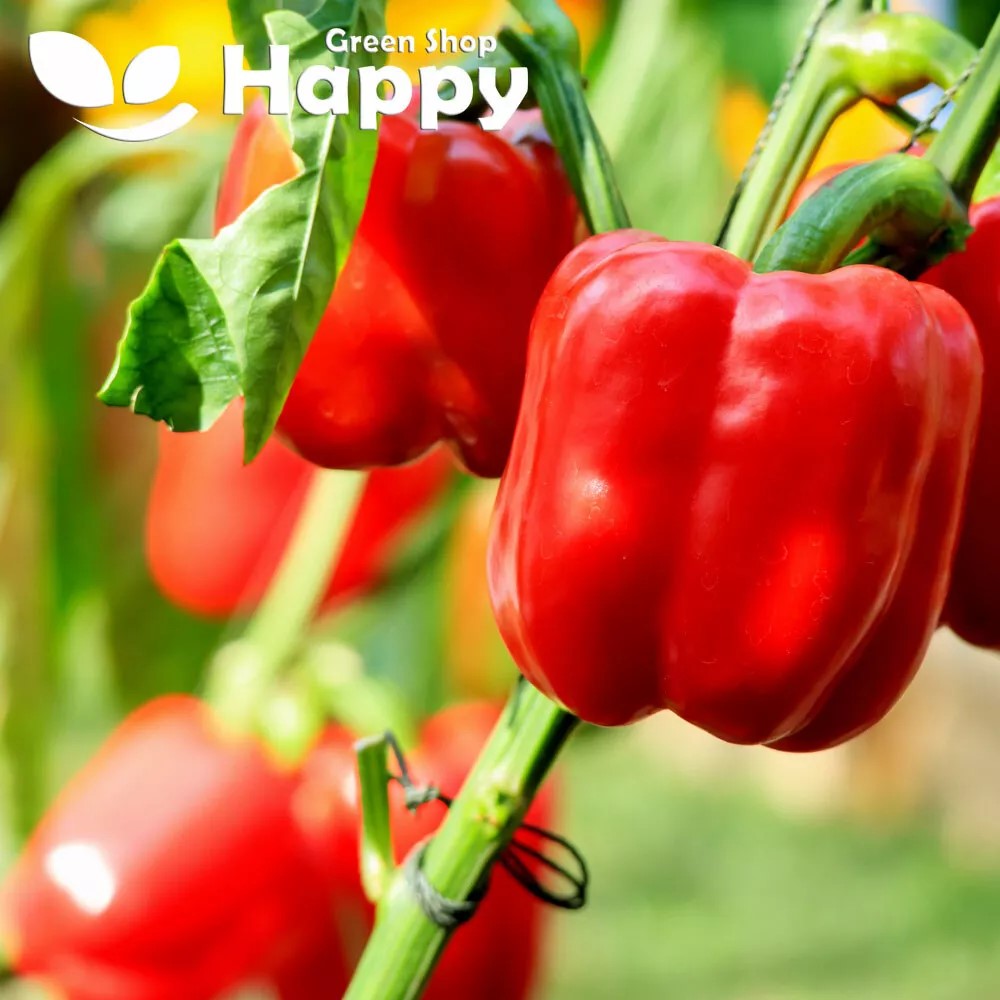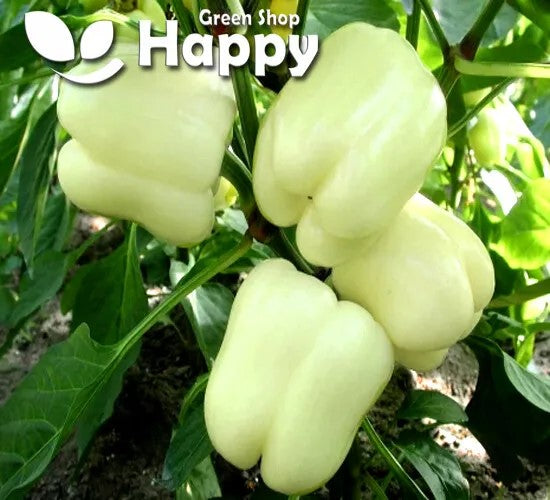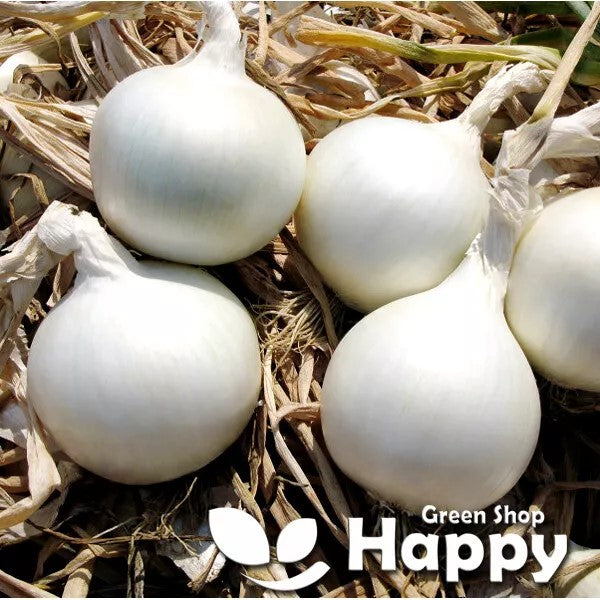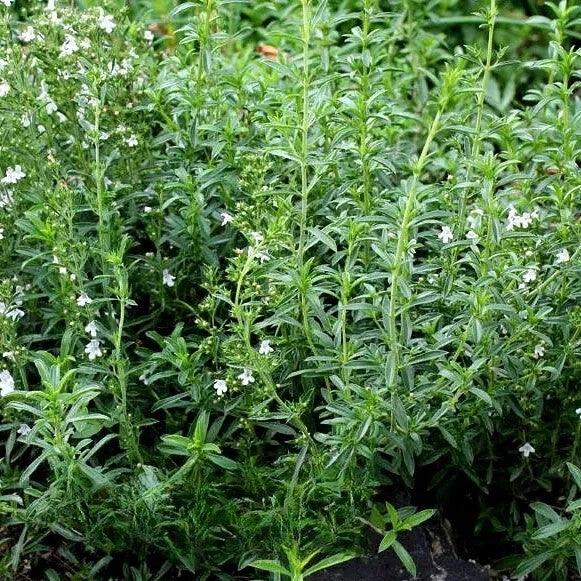Sort by:
190 products
190 products
Tomato 'Adonis' Pink Seeds (Solanum lycopersicum)
Add sweet, juicy color to your garden with Tomato 'Adonis' Pink (Solanum lycopersicum). This indeterminate heirloom produces medium to large, pink fruits with a rich, balanced flavor, ideal for fresh eating, salads, sandwiches, and cooking. Reliable and productive, ‘Adonis’ Pink is perfect for home gardens, raised beds, or greenhouse growing.
How to Grow
-
Sow seeds indoors 6–8 weeks before the last frost.
-
Use fertile, well-drained soil in a sunny location.
-
Sow seeds 0.5–1 cm deep, keeping soil moist at 20–25°C until germination (7–14 days).
-
Transplant seedlings outdoors after frost, spacing 50–60 cm apart.
-
Support plants with stakes or cages and harvest fruits when fully pink and firm.
Key Features
-
Indeterminate heirloom variety
-
Medium to large, pink fruits with rich, balanced flavor
-
High-yielding and productive
-
Perfect for salads, sandwiches, fresh eating, and cooking
-
Thrives in gardens, raised beds, and greenhouses
Ideal For
-
Home gardens and allotments
-
Fresh salads, sandwiches, and cooking
-
Gardeners seeking heirloom tomatoes with reliable yields
-
Continuous summer harvests
Sowing
-
Best time: Indoors 6–8 weeks before last frost
-
Depth: 0.5–1 cm
-
Spacing: 50–60 cm apart
-
Prefers full sun, fertile, well-drained soil
Quick Tip
-
Prune side shoots to improve airflow, reduce disease, and encourage larger, tastier fruits.
Swiss Chard 'Rainbow' Mix – Seeds (Beta vulgaris)
Swiss Chard 'Rainbow' Mix is a vibrant blend of brightly colored chard varieties, producing stems in shades of red, pink, yellow, orange, and white. Not only is it highly decorative in the garden, but it’s also delicious and nutritious. The tender leaves can be used like spinach, while the crunchy stems add color and flavor to stir-fries, soups, and sautés. A cut-and-come-again crop, it will provide a long season of harvests from summer well into autumn.
How to Grow
-
Sow outdoors: March – August, directly into prepared soil.
-
Soil: Fertile, well-drained soil in full sun or partial shade.
-
Spacing: Thin seedlings to 25–30 cm apart.
-
Keep soil consistently moist for tender, flavorful leaves.
Key Features
-
Mix of colorful chard varieties
-
Edible leaves and crunchy stems
-
Long cropping season
-
Cut-and-come-again harvests
-
Both ornamental and edible
Ideal For
-
Kitchen gardens and allotments
-
Edible borders and decorative planting
-
Healthy cooking and juicing
Sowing & Harvest
-
Sow: March – August
-
Harvest: June – November
Quick Tip
Harvest young leaves regularly for salads and cooking. Mature stems can be steamed or sautéed for added color and flavor.
Sweet Pepper 'Purple Bell' Seeds (Capsicum annuum)
Grow something truly eye-catching with Sweet Pepper 'Purple Bell' (Capsicum annuum). This unique variety produces glossy, deep-purple bell peppers that are crisp, juicy, and sweet. Perfect for adding a splash of color to salads, stir-fries, or stuffed dishes, ‘Purple Bell’ combines ornamental beauty with outstanding flavor. Fruits mature from purple to red, giving you a colorful harvest throughout the season.
How to Grow
-
Sow seeds indoors 8–10 weeks before the last frost.
-
Use light, fertile, well-drained soil in full sun.
-
Sow 0.5 cm deep, keeping soil moist at 22–26°C until germination (7–14 days).
-
Transplant outdoors or into containers after frost, spacing 40–50 cm apart.
-
Water regularly and feed with a potassium-rich fertilizer.
Key Features
-
Striking purple bell pepper variety
-
Crisp, sweet, and juicy flavor
-
Fruits mature from purple to red for extended harvest
-
Ideal for containers, patios, or garden beds
-
Ornamental and edible in equal measure
Ideal For
-
Fresh eating and salads
-
Stuffing, roasting, and stir-fries
-
Patio pots and greenhouse growing
-
Gardeners wanting unique, colorful crops
Sowing
-
Best time: Indoors 8–10 weeks before last frost
-
Depth: 0.5 cm
-
Spacing: 40–50 cm apart
-
Prefers warm, sunny conditions and fertile, well-drained soil
Quick Tip
-
Harvest when purple for unique flavor and appearance, or allow to fully ripen to red for maximum sweetness.
Sweet Pepper Bell Mix Seeds (Capsicum annuum)
Add color and flavor to your garden with Sweet Pepper Bell Mix (Capsicum annuum). This vibrant blend produces peppers in shades of red, yellow, orange, and green, each with a crisp texture and sweet, juicy taste. Perfect for fresh eating, stuffing, roasting, or grilling, this mix ensures a plentiful harvest of colorful bell peppers all summer long.
How to Grow
-
Sow seeds indoors 8–10 weeks before the last frost.
-
Use light, fertile, well-drained soil in full sun.
-
Sow 0.5 cm deep, keeping soil moist at 22–26°C until germination (7–14 days).
-
Transplant outdoors or into containers after frost, spacing 40–50 cm apart.
-
Water regularly and feed with a potassium-rich fertilizer.
Key Features
-
Mix of colorful bell peppers: red, yellow, orange, and green
-
Crisp, sweet, and juicy fruits
-
Suitable for containers, greenhouses, or outdoor beds
-
Great yield with long harvesting period
-
Versatile in the kitchen: fresh, cooked, or preserved
Ideal For
-
Fresh eating and salads
-
Stuffing, grilling, and roasting
-
Containers, patios, or garden beds
-
Gardeners who want a colorful harvest
Sowing
-
Best time: Indoors 8–10 weeks before last frost
-
Depth: 0.5 cm
-
Spacing: 40–50 cm apart
-
Prefers warm, sunny conditions and fertile, well-drained soil
Quick Tip
-
Harvest peppers at the green stage for a sharper taste or let them ripen for full sweetness and color.
Sweet Pepper 'Mini Bell' Chocolate – Seeds (Capsicum annuum)
The Sweet Pepper 'Mini Bell' Chocolate is a compact, ornamental, and edible variety producing small, bell-shaped fruits that mature from green to a rich, chocolate brown. Crisp, sweet, and juicy, these peppers are perfect for snacking, salads, roasting, or garnishing dishes. Ideal for containers, patios, or small garden spaces, they combine vibrant color with delicious flavor.
How to Grow
-
Sow seeds indoors from February to April, 0.5 cm deep.
-
Keep at 20–25°C until germination.
-
Transplant seedlings outdoors or into containers after the last frost.
-
Space plants 30–40 cm apart in fertile, well-drained soil with full sun.
-
Provide support if needed and maintain consistent moisture.
Key Features
-
Compact plant producing small, bell-shaped chocolate-brown peppers
-
Crisp, sweet, and juicy flavor
-
Ideal for containers, patios, and small gardens
-
High ornamental value with edible fruits
-
Perfect for fresh eating, roasting, and garnishing
Ideal For
-
Snacking, salads, and cooking
-
Decorative kitchen gardens and container cultivation
-
Gardeners seeking colorful, compact, and productive pepper varieties
Sowing & Harvest
-
Sow: February to April
-
Plant out: May to June
-
Harvest: July to September
Quick Tip
-
Pick peppers when fully colored for the sweetest flavor and best visual appeal.
Sweet Pepper 'Granova' Seeds (Capsicum annuum)
Grow crisp, sweet peppers with Sweet Pepper 'Granova' (Capsicum annuum). This productive variety develops large, blocky fruits that ripen from green to a rich, glossy red. With thick walls and a mild, sweet taste, they’re perfect for fresh salads, stuffing, roasting, grilling, and adding color to summer dishes.
How to Grow
-
Sow seeds indoors 8–10 weeks before the last frost.
-
Use fertile, well-drained soil in a warm, sunny spot.
-
Sow seeds 0.5–1 cm deep and keep soil moist until germination (10–14 days).
-
Transplant outdoors or into containers after frost, spacing 40–50 cm apart.
-
Harvest when peppers are fully colored for the best flavor.
Key Features
-
Produces large, blocky sweet peppers
-
Thick walls with a crisp, juicy texture
-
Sweet flavor, perfect for fresh or cooked dishes
-
Productive and reliable garden variety
-
Suitable for gardens, greenhouses, or containers
Ideal For
-
Fresh salads, grilling, and stuffing
-
Roasting and adding to sauces
-
Greenhouse and container growing
-
Gardeners who want high yields of sweet peppers
Sowing
-
Best time: Indoors 8–10 weeks before last frost
-
Depth: 0.5–1 cm
-
Spacing: 40–50 cm apart
-
Prefers full sun and fertile, well-drained soil
Quick Tip
-
Pick the first few peppers while still green to encourage heavier fruiting later in the season.
Sweet Pepper 'Hallo' – Seeds (Capsicum annuum)
The Sweet Pepper 'Hallo' is a compact and productive variety producing blocky, thick-walled fruits that ripen from green to bright red. With a crisp texture and sweet, mild flavor, these peppers are perfect for fresh salads, stuffing, roasting, or grilling. Reliable and early to mature, 'Hallo' thrives in greenhouses, polytunnels, or sunny patios in containers and beds.
How to Grow
-
Sow seeds indoors from February to April at 20–25°C.
-
Sow 0.5 cm deep in trays or pots of moist compost.
-
Transplant into individual pots when seedlings are large enough.
-
Plant out in a greenhouse, tunnel, or warm sheltered spot after the last frost.
-
Keep well-watered and feed regularly for the best harvest.
Key Features
-
Compact, high-yielding sweet pepper variety
-
Blocky fruits ripen from green to vibrant red
-
Thick, crunchy flesh with mild, sweet flavor
-
Early to mature and reliable in cooler climates
-
Suitable for containers, patios, and greenhouses
Ideal For
-
Fresh salads and snacking
-
Stuffing, grilling, and roasting
-
Container growing on sunny patios
-
Greenhouse and polytunnel cultivation
Sowing & Harvest
-
Sow: February to April (indoors)
-
Depth: 0.5 cm
-
Spacing: 40–50 cm between plants
-
Harvest: July to October
Quick Tip
-
Regular picking encourages continuous fruiting and a longer harvest season.
Summer White Onion ‘Alibaba’ Seeds (Allium cepa)
Grow mild, crisp onions with Summer White Onion ‘Alibaba’ (Allium cepa). This early-maturing summer variety produces medium-sized, pearly white bulbs with a sweet, delicate flavor, perfect for fresh salads, cooking, and light pickling. Easy to grow and reliable, it’s ideal for kitchen gardens, raised beds, and allotments.
How to Grow
-
Sow seeds indoors 8–10 weeks before the last frost or directly outdoors in early spring.
-
Use fertile, well-drained soil in full sun.
-
Sow seeds 0.5–1 cm deep and thin seedlings to 10–15 cm apart.
-
Keep soil consistently moist for germination (10–14 days).
-
Harvest bulbs when tops begin to yellow and fall over; cure in a dry, airy place before storage.
Key Features
-
Medium-sized, pearly white bulbs with mild, sweet flavor
-
Early-maturing summer variety
-
Ideal for fresh salads, cooking, and light pickling
-
Hardy, productive, and easy to grow
-
Suitable for kitchen gardens, raised beds, and allotments
Ideal For
-
Vegetable gardens, raised beds, and allotments
-
Fresh salads, cooking, and pickling
-
Succession sowing for continuous harvest
-
Homegrown culinary use
Sowing
-
Best time: 8–10 weeks before last frost indoors or early spring outdoors
-
Depth: 0.5–1 cm
-
Spacing: Thin to 10–15 cm apart
-
Prefers full sun and fertile, well-drained soil
Quick Tip
-
Sow in succession every 2–3 weeks to enjoy a steady supply of tender, mild white onions.
Summer Savory 'Midget' – Seeds (Satureja hortensis)
Summer Savory ‘Midget’ is a compact, fast-growing annual herb, prized for its spicy, peppery flavour that resembles thyme and oregano. This dwarf variety is especially suited for container growing, raised beds, and small herb gardens.
Traditionally used to season bean dishes, meats, soups, and stews, it is also excellent fresh or dried as a versatile culinary herb. With its neat, bushy growth habit and aromatic leaves, ‘Midget’ is both decorative and useful in the kitchen.
How to Grow
-
Sow indoors: March – April in pots or trays
-
Sow outdoors: April – June, directly into prepared soil
-
Depth: Lightly cover seeds with soil (approx. 0.5 cm)
-
Spacing: 20–25 cm between plants
-
Position: Sunny, well-drained spot
-
Soil: Light, sandy, moderately fertile
Key Features
-
Compact dwarf variety – ideal for pots and small spaces
-
Distinct peppery flavour – a classic bean seasoning
-
Culinary herb for meats, stews, soups, and sauces
-
Can be used fresh or dried
-
Hardy, quick-growing, and easy to maintain
Harvesting
-
Harvest from: June – September
-
Pick fresh leaves regularly to encourage new growth.
-
For winter use, cut and dry whole sprigs just before flowering.
Showing 54/190





